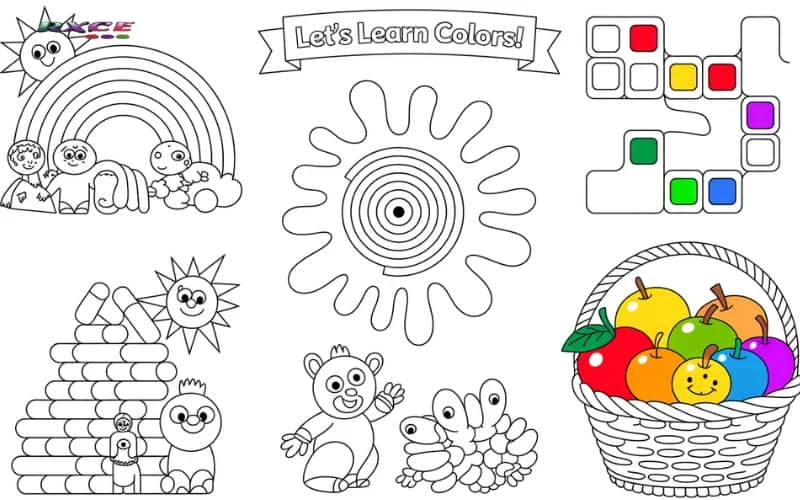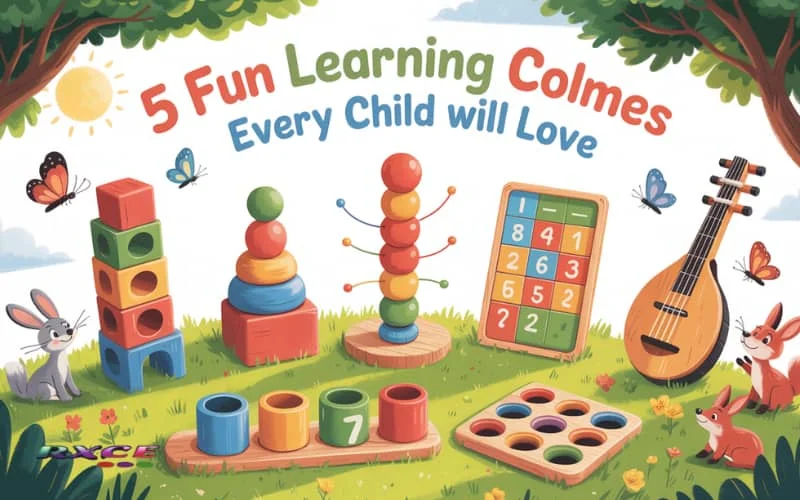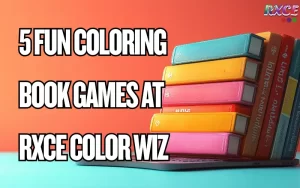Introducing colors to children is an important step in early childhood development. Kids learn best through play, and engaging activities can help them recognize, remember, and use colors in their daily lives. Learning colors games provide both fun and educational value RXCE Color Wiz, making it easier for children to understand the world around them. With interactive play, children not only identify colors but also develop essential skills like memory, problem-solving, and creativity. Below are five fun and effective learning colors games that every child will enjoy.
The Importance of Learning Colors Games
Colors are one of the first concepts children grasp as they begin exploring their surroundings. From a young age, children notice the bright shades of toys, clothes, and everyday objects. Learning colors games allow children to connect what they see with names and meanings. These games also encourage language development as kids practice saying the names of colors out loud. Additionally, color recognition enhances cognitive skills, as it requires observation, differentiation, and categorization.
Parents and educators can use learning colors games to make lessons more engaging. Instead of memorizing flashcards, children play and interact with objects, which makes the learning process exciting. These games also build confidence, as kids feel a sense of accomplishment when they correctly identify or use colors in different activities.
1. Color Sorting Game
One of the simplest yet most effective learning colors games is the color sorting activity. Children naturally enjoy organizing objects, and this game helps them practice identifying and grouping items by color.
To play, gather everyday objects like buttons, blocks, or balls in a variety of colors. Provide containers such as cups or baskets, each labeled with a different color. The child’s task is to sort the objects into the correct container. For example, red buttons go into the red basket, while blue blocks go into the blue one.
This game improves fine motor skills as children pick up and move small objects. It also strengthens concentration, as kids need to focus on identifying colors correctly. Parents can make the activity more challenging by adding new shades like light blue, dark green, or pink, encouraging children to refine their recognition of different tones.
2. Color Scavenger Hunt
Another fun way to teach kids is through a color scavenger hunt. This game can be played indoors or outdoors and involves children searching for objects of specific colors.
Parents or teachers can create a list of colors and challenge the child to find items that match. For example, the child may be asked to find something red, like an apple, or something green, like a leaf. For indoor play, kids can search for toys, clothing, or household objects in different shades.
This game combines movement with learning, keeping children physically active while reinforcing color recognition. It also sparks creativity, as kids may notice objects they hadn’t paid attention to before. A scavenger hunt can be adapted for group play, where children compete or work together to find the most colorful items within a set time limit.

3. Color Matching Card Game
Card games are a classic tool for learning, and they work wonderfully for teaching colors. A simple deck of color cards can provide hours of fun while strengthening memory and recognition.
To play, prepare cards with solid color backgrounds or pictures featuring different colors. Spread the cards face down and let children take turns flipping two at a time to find a match. Each time they flip, they should say the name of the color out loud.
This memory-based activity helps children sharpen their concentration, patience, and vocabulary. Younger kids may start with just a few pairs, while older children can use a larger set for more of a challenge. Parents can also add variations, such as matching a colored card with an object card, like pairing a yellow card with a picture of a banana.
4. Color Mixing Game
Introducing kids to the concept of mixing colors can make learning even more exciting. This game involves combining two colors to create a new one, which feels like magic to children.
To play, use child-safe paints, watercolors, or even food coloring. Give children two primary colors, such as red and blue, and let them mix them together to see what new shade appears. For instance, mixing red and blue creates purple, while mixing yellow and blue creates green.
The color mixing game not only teaches children about primary and secondary colors but also inspires creativity. Kids love experimenting, and this activity gives them the freedom to explore while still learning. It also develops fine motor skills through painting or stirring. Parents can extend the game by asking children to guess what color will appear before mixing, which boosts critical thinking.
5. Online and Digital Learning Colors Games
In today’s digital age, there are many online resources that make learning colors engaging for children. Interactive apps and websites feature fun games, animations, and quizzes that teach children to identify and name colors. These digital tools often use songs, puzzles, and challenges that adapt to the child’s skill level.
For example, an app may ask a child to tap on the red balloon or drag the green block into a box. Others may include creative drawing games where kids color objects while learning their names. These interactive platforms combine entertainment with education, making them popular among both parents and children.
Online learning colors games are especially useful for busy parents, as children can practice independently while still gaining educational value. However, it is important to balance screen time with hands-on activities like sorting or painting to provide a well-rounded learning experience.
Tips for Making Learning Colors Games More Effective
While these five games are fun and engaging, a few strategies can make them even more beneficial for children. First, consistency is key. Repeating games regularly helps children retain what they learn. Second, parents should use real-life examples. Pointing out colors during daily activities, like saying “Look at the yellow sun” or “Your shirt is blue,” reinforces recognition naturally.
Encouragement is also important. Celebrating small successes builds confidence and motivates children to keep learning. Finally, combining different types of learning colors games ensures that children experience a variety of challenges, from physical activities like scavenger hunts to creative ones like painting.
Conclusion
Learning colors is a milestone in early childhood, and the best way to teach it is through play. Learning colors games are not only fun but also educational, helping children develop recognition, memory, and creativity. Whether it is sorting objects, hunting for colorful items, matching cards, mixing paints, or playing interactive digital games, each activity brings unique benefits to a child’s development.
By making learning interactive and enjoyable, parents and teachers can ensure children build a strong foundation in color recognition. With the right games and encouragement, kids will not only remember colors but also enjoy the process of discovery and play.








